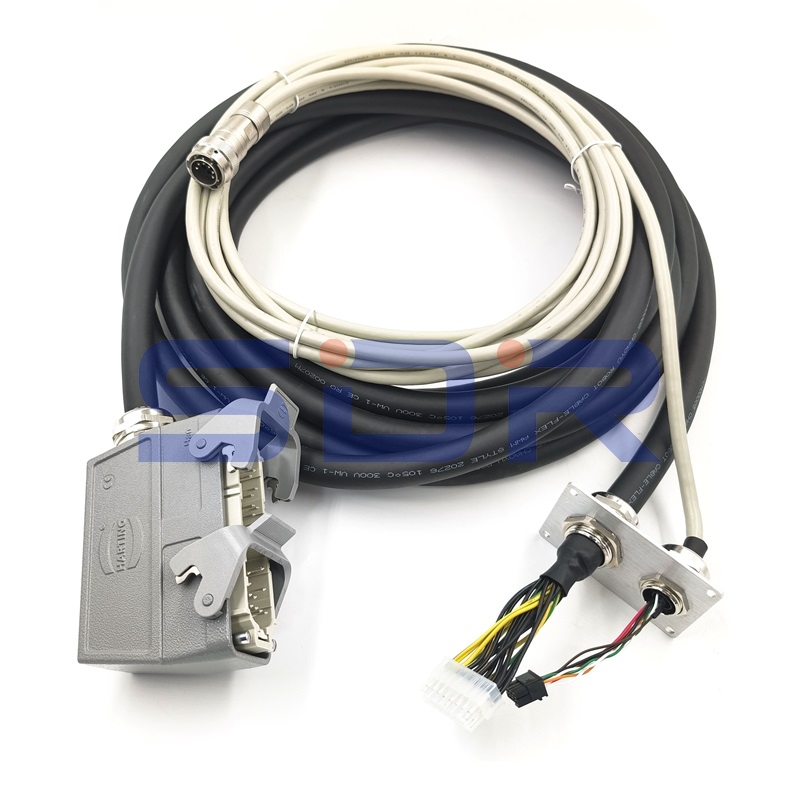The 3HAC056167-001 Wire & Cable is an essential component for powering and transmitting signals in robotic systems. Proper installation of this cable is critical to ensure the longevity and performance of the robotic equipment it supports. This guide will walk you through the key steps and considerations for installing the 3HAC056167-001 wire and cable in a robotics environment.

Before installing the 3HAC056167-001 cable, it is essential to ensure that the installation environment and tools are adequately prepared:
Inspect the Cable:
Check the cable for any visible damage or defects such as cuts, kinks, or abrasions.
Ensure the cable length matches the required distance for installation.
Check the Installation Environment:
Ensure that the robotic system is powered off to prevent any accidents during installation.
Clear the installation area of debris or potential hazards that may interfere with the process.
Check for any sharp edges or abrasive surfaces that could damage the cable during installation.
Gather Necessary Tools:
You will need cable ties, strain relief components, cutters, and a screwdriver for proper cable installation and management.
Ensure all tools are non-conductive and safe for electrical installations.
Verify Electrical Compatibility:
Before installation, confirm the cable’s voltage rating and shielding are compatible with the robotic system’s electrical requirements. This ensures smooth signal transmission and prevents any damage to the robot's electronics.
Proper routing of the 3HAC056167-001 Wire & Cable is crucial to prevent damage and ensure signal integrity:
Identify the Cable Path:
Plan the cable routing path before installation, avoiding areas where it may be exposed to excessive bending, twisting, or abrasion.
Keep the cable path away from heat sources, sharp objects, and moving parts within the robotic system.
Cable Flexibility:
This cable is designed to handle frequent movement, but care should be taken to avoid overly tight bends. The bending radius should be as wide as possible to prevent internal wire damage.
Cable Segmentation:
If the cable needs to be segmented, make sure to use junction boxes or approved connectors to avoid signal loss or interference.
Securing the cable is essential to prevent displacement during robotic movements. Follow these guidelines for proper securing:
Use Cable Ties:
Secure the cable using cable ties at regular intervals along the routing path, ensuring that the ties are snug but not overly tight to avoid compressing or damaging the cable.
Place ties near the cable ends and along the middle section to maintain even distribution.
Apply Strain Relief:
Strain relief components must be applied where the cable connects to the robotic system’s power source or signal input/output (I/O) ports. This prevents stress at the connection points and extends the cable’s lifespan.
Use grommets or strain relief clamps to distribute the stress of bending or pulling at these critical points.
Prevent Cable Twisting:
During installation, avoid twisting the cable, as this can affect its internal conductors and potentially reduce signal transmission quality.
Once the cable is routed and secured, it is time to connect it to the robotic system's electrical and data ports:
Power Connection:
Ensure that the cable's power connection matches the robotic system's voltage and current requirements.
Firmly insert the power plug into the designated port and tighten any screws or connectors to ensure a secure fit.
Data Connection:
The 3HAC056167-001 cable may also be used for data transmission, such as transmitting sensor data or communication signals. Ensure that the data lines are correctly connected to prevent signal loss or interference.
For data connections, verify that the shielding is intact and correctly grounded to protect against electromagnetic interference (EMI).
Once the cable is installed, it's essential to conduct a few checks to ensure everything is functioning as expected:
Check Cable Tension:
Ensure that the cable is not under tension after securing it. There should be some slack to allow for movement without pulling on the connectors or cable ties.
Test Signal Transmission:
Power on the robotic system and test the signal and power transmission through the cable. Confirm that all signals are stable and that there is no interference or data loss during robot operation.
Regular Maintenance:
Perform regular inspections of the cable to check for signs of wear or damage. Ensure that strain relief points remain secure and that cable ties are intact.
Environmental Exposure:
If the cable is used in harsh environments, such as areas with exposure to chemicals or high heat, make sure to implement protective coverings or conduits to further shield the cable.
Avoid Sharp Bends: Always ensure that the cable's bend radius is wider than the recommended specification to avoid internal damage.
Protect from Environmental Hazards: If the cable is installed in an environment with oil, chemicals, or extreme temperatures, use protective tubing or conduits.
Proper Grounding: Ensure that the cable is properly grounded, especially when used for data transmission, to prevent EMI.
The 3HAC056167-001 Wire & Cable is a high-quality, durable component designed for use in the demanding robotics industry. Proper installation is essential to maximize its lifespan and ensure reliable signal and power transmission. By following the steps outlined above, you can ensure that your cable is installed correctly, reducing maintenance needs and improving overall system performance.